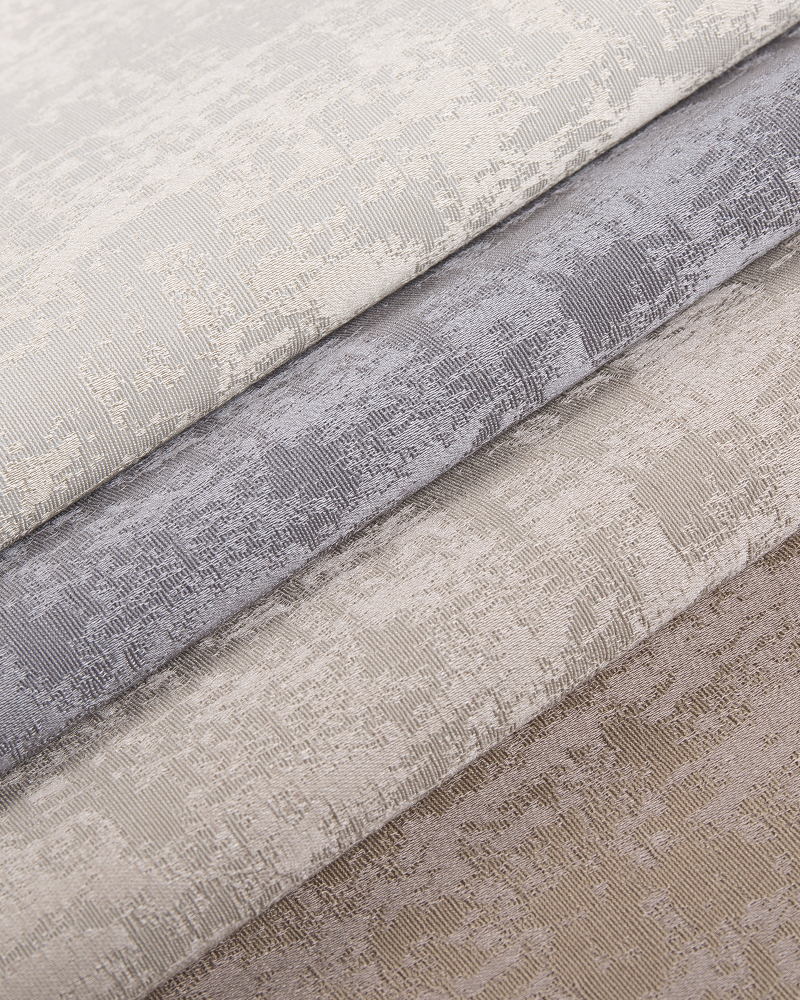
High-precision blackout curtain fabrics need to cope with the challenges of various climate environments in design and application, including humidity, temperature changes, ultraviolet radiation and other factors. The functionality of the fabric is not limited to blackout, it also needs to maintain stable performance in various climate conditions to ensure comfort, durability and aesthetics.
In areas with high humidity, such as tropical or coastal areas, curtain fabrics tend to absorb moisture, which may lead to problems such as mold, odor or fabric swelling. High-precision blackout curtain fabrics usually use special waterproof treatments or antibacterial coatings to reduce moisture absorption. For example, polyester-based fabrics can effectively repel moisture and prevent mold growth after coating. In addition, some high-end fabrics will also add moisture-proof fibers to improve the fabric's moisture resistance, thereby keeping the curtains clean and durable.
High temperature environments will accelerate the aging process of curtain fabrics, resulting in color fading, material brittleness and other problems. To meet this challenge, high-precision blackout curtain fabrics usually use high-temperature and UV-resistant materials, such as high-performance polyester (Polyester) or polyurethane (PU) coatings. These fabrics can effectively reflect and shield ultraviolet rays, thereby reducing the heat from sunlight entering the room, keeping the indoor temperature stable and delaying the aging of the fabric.
In addition, the multi-layer structure of high-precision blackout curtain fabrics (such as inner coating, outer fabric and insulation layer) can also enhance thermal isolation and prevent the indoor temperature from being too high. Especially in hot summer areas, curtains can effectively reduce the burden of air conditioning and save energy.
In cold environments, curtains not only need to block light, but also need to have good thermal insulation performance. High-precision blackout curtain fabrics generally use dense weaving processes and multi-layer structures, which can effectively block cold air from entering the room, thereby improving the thermal insulation of curtains. In cold areas, the thermal insulation of curtains is particularly important, which can effectively keep the room warm, reduce heat loss and reduce energy consumption.

In addition, in low-temperature environments, the fabric of the curtain needs to remain soft to avoid becoming brittle or cracking at low temperatures. High-precision blackout curtain fabrics generally use specially treated high-tenacity fibers, such as polyester or nylon, which can maintain elasticity and flexibility at low temperatures and are not easy to break.
Ultraviolet radiation is one of the most common challenges in hot and sunny areas. Curtain fabrics are prone to fading, aging, and even damage when exposed to ultraviolet rays for a long time. The polyester or special coating used in high-precision blackout curtain fabrics can not only block ultraviolet rays, but also effectively reduce the damage of ultraviolet rays to curtain fabrics. The coating can prevent ultraviolet rays from directly penetrating the fabric by reflecting and absorbing ultraviolet rays, and effectively extend the service life of the curtains.
In an environment with more wind and sand, especially in deserts or arid areas, sand and dust cause serious wear and tear on curtain fabrics. For this reason, high-precision blackout curtain fabrics usually use wear-resistant and durable fabrics, such as densely woven polyester or nylon fibers. These materials are not easily eroded by wind and sand, and are relatively easy to clean. At the same time, the dust-proof effect of the surface coating can also effectively prevent sand and dust accumulation and reduce the difficulty of cleaning.
In response to the challenges of different climatic environments, the design of high-precision blackout curtain fabrics pays more and more attention to versatility. For example, some curtain fabrics may adopt a double-sided design, with one side reflecting ultraviolet rays and the other side maintaining good air permeability to adapt to temperature changes in different seasons. Some curtain fabrics will also add self-cleaning technology, using nano-coatings or special coatings to reduce the adhesion of dust and stains, thereby reducing the frequency of cleaning and maintenance.
High-precision blackout curtain fabrics can effectively cope with the challenges of different climate environments by using high-performance fiber materials and advanced coating technology. In high humidity, high temperature, cold, strong ultraviolet rays and windy and sandy environments, they can maintain stable performance, provide a comfortable indoor environment and a long service life. With the advancement of technology, future high-precision blackout curtain fabrics will be more intelligent and environmentally friendly, and can better adapt to various extreme climate environments and meet the diverse needs of consumers.